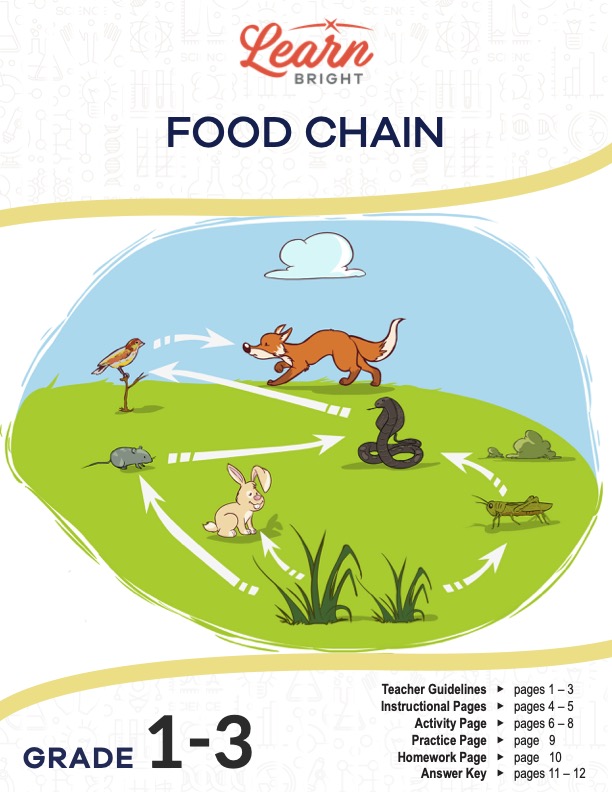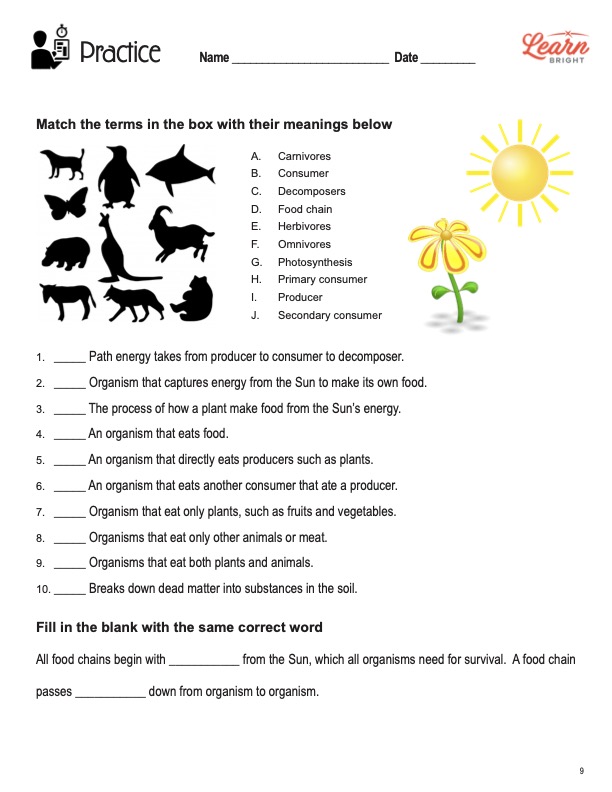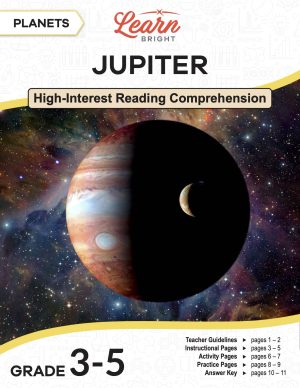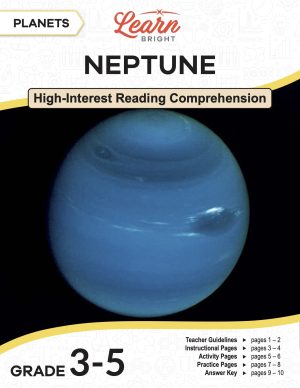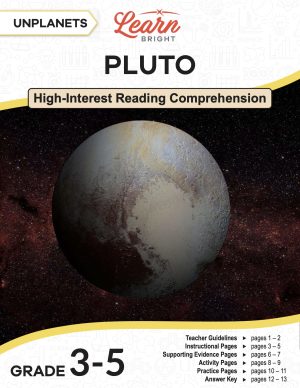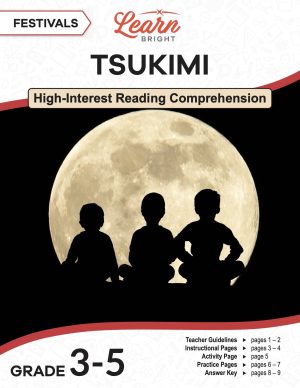Description
What our Food Chain Introduction lesson plan includes
Lesson Objectives and Overview: Food Chain Introduction explores the path by which living things get their energy. Students will learn to define related terms and label a diagram correctly. They will compare and contrast different types of consumers and figure out which group they fall in themselves. This lesson is for students in 1st grade, 2nd grade, and 3rd grade.
Classroom Procedure
Every lesson plan provides you with a classroom procedure page that outlines a step-by-step guide to follow. You do not have to follow the guide exactly. The guide helps you organize the lesson and details when to hand out worksheets. It also lists information in the yellow box that you might find useful. You will find the lesson objectives, state standards, and number of class sessions the lesson should take to complete in this area. In addition, it describes the supplies you will need as well as what and how you need to prepare beforehand. The extra supplies you will need for this lesson include scissors and glue or tape.
Options for Lesson
The “Options for Lesson” section of the classroom procedure page lists a few more suggestions for things to add to the lesson. It also lists a few alternatives as well. Many of these relate specifically to the activity worksheet. For instance, instead of using the organism labels on the worksheets, have students use old magazines and cut out pictures of producers, consumers, and decomposers. You could alternatively create additional organism labels for them to sort. Another idea is to allow students to work in pairs for the activity. Or, the whole class could work on the activity together with your guidance. As another activity or assignment, students could research animals and figure out whether they are herbivores or carnivores.
Teacher Notes
The paragraph on the teacher notes pages has a little extra information. It provides more guidance on the lesson and gives you a few more ideas. It suggests using the lesson to introduce healthy eating habits. If you want, you can teach this lesson along with others about animals or plants in general. Use the blank lines on this page to write down whatever other ideas or thoughts you have before you start the lesson.
FOOD CHAIN INTRODUCTION LESSON PLAN CONTENT PAGES
Producers and Consumers
There are two pages of content in the Food Chain Introduction lesson plan. The first page defines the food chain as the path that energy takes from producers to consumers to decomposers. It explains how eating food provides people with energy. The energy in food, however, comes from the sun originally. This is because plants convert energy, the sun’s light, into food through photosynthesis.
We consider plants producers because of this exact process. A producer captures energy from the sun to make its own food, which is exactly what plants do. They receive light or energy from the sun and use it to make food in the form of sugar to survive. When animals eat plants, that is how they receive their energy. Animals are consumers for this reason.
A consumer, as it relates to the food chain, is an animal that eats plants or other animals. Students will recognize that humans are consumers because they cannot turn the sun’s energy into food for their bodies. We have to eat foods like fruits and vegetables, fish, or meat. Every animal is a consumer for the same reason. They must eat plants or other animals to receive energy.
Students will then learn that there are tiers when it comes to consumers. Primary consumers are organisms that directly eat plants, such as rabbits. Secondary consumers eat other consumers that ate the plants. A person can be both a primary and secondary consumer. If people eat corn on the cob, they are primary consumers. On the other hand, if they eat a hamburger, they are secondary consumers because they are eating cow meat. The cow was the primary consumer. Students will also discover that the further along the food chain they go, the less energy there is. That is why eating fruits and vegetables is good for us.
Herbivores, Carnivores, and Omnivores
The second content page describes the differences between herbivores, carnivores, and omnivores. Herbivores are organisms that eat only plants, like vegetables and fruits. They do not eat any meat. Examples include cows, deer, and elephants. Carnivores, on the other hand, eat only animals, or only meat. They do not eat any plants for their survival. Examples include lady bugs, lions, and tigers.
Omnivores eat both plants and animals for their survival. Examples include bears, humans, and chickens. Then there are decomposers. Decomposers make up the last component of the food chain. These organisms break down dead matter into substances that plants (producers) can use. Decomposers include worms, bacteria, and fungi. Plants use the decomposed material as food, and the cycle continues.
The lesson provides a basic food chain cycle that will make it easy for students to follow the process. It shows a picture of a plant, mice, an owl, and worms to represent each role in the cycle. The plant is the producer and receives energy from the sun. Mice eat the plant to get energy themselves. They are the primary consumer. Then the owl eats the mice, making it the secondary consumer. After it dies, worms decompose the dead matter and provide food and nutrients for plants.
You can explain that there are many different food chains that involve other organisms. It could be a good idea to have students try to create their own food chains as an additional activity.
Key Terms
Here is a list of the vocabulary words students will learn in this lesson plan:
- Food chain: the path that energy takes from producers to consumers to decomposers
- Producer: an organism that captures energy from the sun to make its own food
- Consumer: an organism that eats producers or other consumers
- Primary consumer: an organism that directly eats producers
- Secondary consumer: an organism that eats a primary consumer
- Herbivore: an organism that only eats plants
- Carnivore: an organism that only eats meat
- Omnivore: an organism that eats both plants and meat
- Decomposer: an organism that breaks down dead matter into substances that producers can use
FOOD CHAIN INTRODUCTION LESSON PLAN WORKSHEETS
The Food Chain Introduction lesson plan includes three worksheets: an activity worksheet, a practice worksheet, and a homework assignment. Each one helps reinforce students’ understanding of the material they learned about. You can refer to the classroom procedure guidelines to know when to hand out each worksheet.
PRODUCER, CONSUMER, DECOMPOSER ACTIVITY WORKSHEET
For the activity, students will cut out the words on the first worksheet along the dotted lines. Then they will glue the slips of paper below the correct label on the following worksheet pages. For the consumers section, they will also circle whether the organism is primary or secondary and whether it is a carnivore, herbivore, or omnivore.
FOOD CHAIN INTRODUCTION PRACTICE WORKSHEET
There are a couple sections on the practice worksheet. First, students will review 10 statements. Using the terms in the word bank, they will match the word to its correct definition. Next, they will fill in the blanks of a short paragraph. The correct term for both blanks is the same.
KITCHEN FIND HOMEWORK ASSIGNMENT
The homework assignment requires students to look in their fridges, cabinets, pantries, or other areas where they store food. Students will answer the four prompts on the worksheet according to the foods they find. They will first list which foods herbivores would eat. Next, they will list the foods carnivores would eat. Then they will list their own favorite foods from the lists they created in the first two prompts. Finally, they will answer whether or not they are a herbivore, carnivore, or omnivore.
Worksheet Answer Keys
The final few pages of the lesson plan are answer keys for worksheets. The answer key for the activity lists the organisms under the correct label. It also lists the applicable roles each consumer plays. The practice worksheet answer key shows the correct answers in red. For the homework, students’ responses will vary. You will have to check student by student to ensure their answers reflect the foods they consume. If you choose to administer the lesson pages to your students via PDF, you will need to save a new file that omits these pages. Otherwise, you can simply print out the applicable pages and keep these as reference for yourself when grading assignments.

